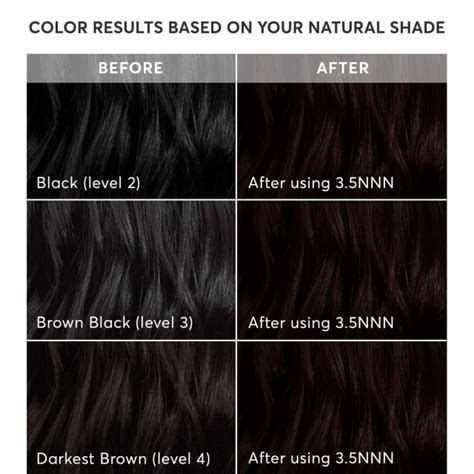Unleash the Power of Black No. 1 Dye
Black No. 1 dye, also known as Solvent Black 3, is a versatile and widely used colorant for a myriad of applications. With its deep, dark, and intense hue, this dye has become a staple in various industries, including textiles, cosmetics, and art.

Properties and Benefits of Black No. 1 Dye
- Exceptional Darkness: Black No. 1 dye produces the darkest and boldest black shade, making it ideal for applications requiring maximum opacity.
- High Colorfastness: The dye exhibits excellent resistance to fading, heat, and chemicals, ensuring the longevity of the black color.
- Wide Solubility: Black No. 1 dye is soluble in a variety of solvents, including water, alcohols, and glycols, providing flexibility in application methods.
- Non-Toxic: The dye is generally considered non-toxic and safe for use in consumer products, meeting various regulatory standards.
Applications of Black No. 1 Dye
The versatility of Black No. 1 dye extends to a wide range of applications:
- Textiles: Fabric dyeing, yarn dyeing, and ink formulation
- Cosmetics: Hair colorants, mascaras, and eyeliners
- Arts and Crafts: Oil paints, acrylics, and watercolors
- Industrial: Plastics, rubber, and leather dyeing
Unique Applications of Black No. 1 Dye
Beyond traditional uses, Black No. 1 dye’s properties lend it to innovative applications:
- High-Performance Coatings: Imparting a deep black finish to surfaces exposed to harsh conditions
- Selective Absorbance: Creating optical filters for capturing specific wavelengths of light
- Medical Diagnostics: Developing contrast agents for medical imaging
Global Market Size and Industry Trends
The global market for Black No. 1 dye is valued at an estimated USD 500 million and is projected to grow significantly in the coming years. Key industry trends include:
- Increasing Demand in Textiles and Automotive Industries: Growing demand for black clothing and high-performance automotive finishes
- Environmental Regulations: Emphasis on eco-friendly and sustainable dye production
- Technological Advancements: Development of new dye formulations with enhanced properties
Common Mistakes to Avoid when Using Black No. 1 Dye
- Overuse: Excessive use can result in a dull or uneven finish.
- Improper Dilution: Failure to follow instructions for dissolving and diluting the dye can lead to poor color distribution.
- Mixing Incompatibilities: Combining Black No. 1 dye with certain other dyes or chemicals can cause undesired color changes or precipitation.
Frequently Asked Questions (FAQs)
-
Q: Is Black No. 1 dye safe for use on sensitive skin?
A: Generally yes, but it is recommended to perform a patch test before applying to larger areas. -
Q: What is the difference between Black No. 1 dye and other black dyes?
A: Black No. 1 dye produces the darkest and most intense black hue. -
Q: How can I create different shades of black using Black No. 1 dye?
A: By varying the concentration of the dye solution. -
Q: Is Black No. 1 dye available in different forms?
A: Yes, it is available as a powder, liquid, and paste. -
Q: What is the shelf life of Black No. 1 dye?
A: Up to 2 years when stored in a cool, dry place. -
Q: Can I mix Black No. 1 dye with other colors to create custom shades?
A: Yes, but it is important to test the combinations beforehand. -
Q: What safety precautions should I take when handling Black No. 1 dye?
A: Wear gloves and avoid contact with eyes and mouth. -
Q: Is Black No. 1 dye biodegradable?
A: No, it is not biodegradable.
Conclusion
Black No. 1 dye remains an indispensable colorant due to its exceptional darkness, high colorfastness, and versatile properties. Its applications span a multitude of industries, from textiles to art and technology. By understanding the properties, applications, and best practices associated with Black No. 1 dye, users can harness its full potential to achieve desired results.
Table 1: Physical Properties of Black No. 1 Dye
| Property | Value |
|---|---|
| CAS Number | 3439-15-7 |
| Molecular Formula | C₂₈H₂₄N₈ |
| Molecular Weight | 598.62 g/mol |
| Appearance | Black powder |
| Melting Point | 250-255 °C |
| Boiling Point | Decomposes |
Table 2: Solubility of Black No. 1 Dye
| Solvent | Solubility (g/L) |
|---|---|
| Water | 0.1 |
| Ethanol | 5.0 |
| Isopropanol | 10.0 |
| Glycerol | 2.0 |
| Benzene | 20.0 |
Table 3: Applications of Black No. 1 Dye
| Industry | Application |
|---|---|
| Textiles | Fabric dyeing, yarn dyeing, ink formulation |
| Cosmetics | Hair colorants, mascaras, eyeliners |
| Arts and Crafts | Oil paints, acrylics, watercolors |
| Industrial | Plastics, rubber, leather dyeing |
| Medical | Contrast agents for medical imaging |
Table 4: Safety Precautions for Black No. 1 Dye
| Precaution | Explanation |
|---|---|
| Wear gloves | Avoid direct skin contact |
| Avoid contact with eyes and mouth | The dye can be irritating |
| Use in well-ventilated area | Inhalation of vapors should be minimized |
| Store in a cool, dry place | Prolonged exposure to heat or moisture can affect stability |
| Dispose of properly | Refer to local regulations for proper waste disposal |
